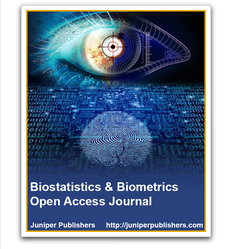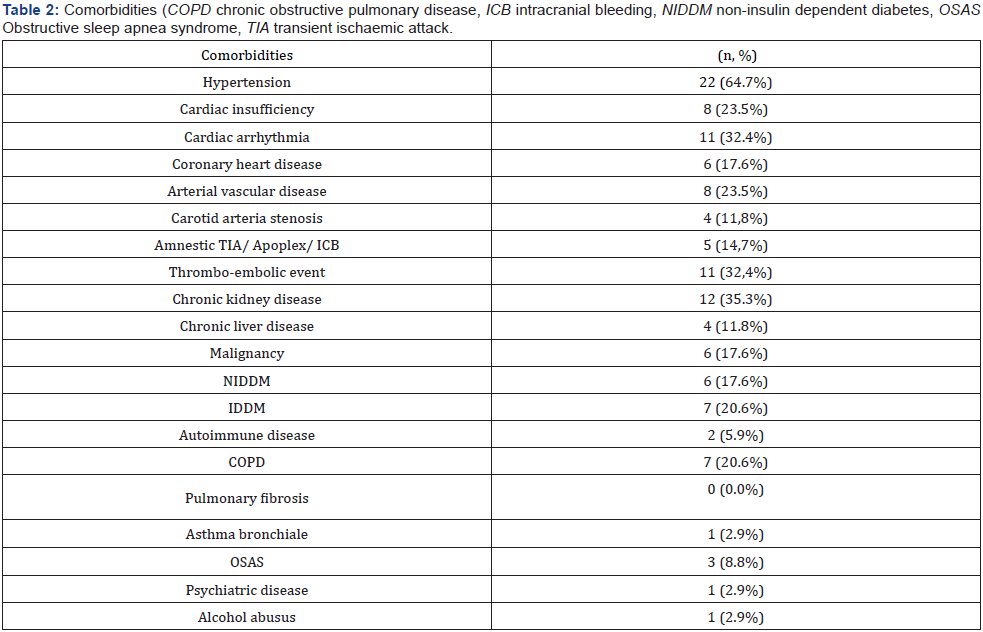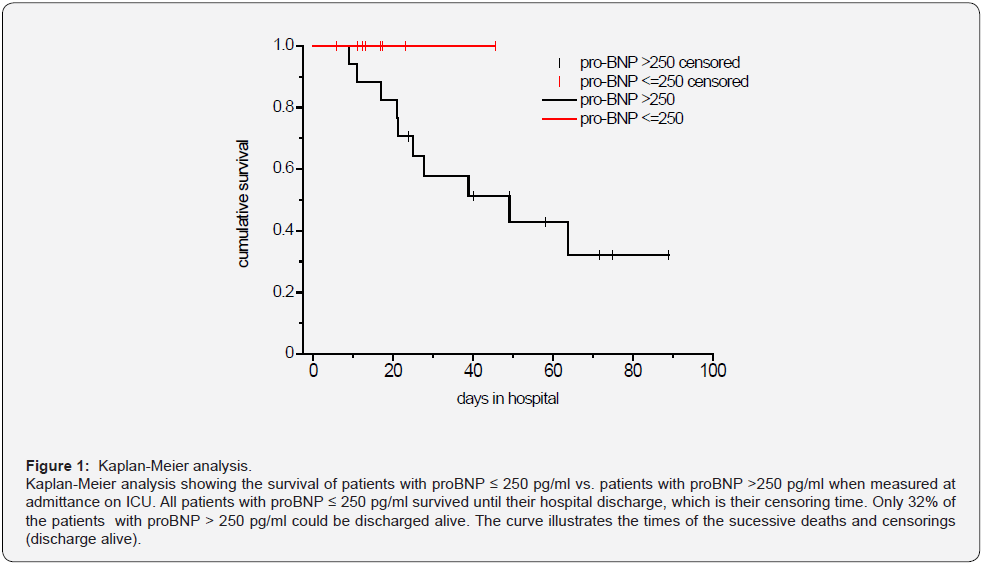Biostatistics and Biometrics - Juniper Publishers
Abstract
Oncology Phase II trials’ main objective is to collect preliminary efficacy data of an oncology treatment, that will be used to inform and decide whether to further investigate the treatment. Choosing a proper design is an important but not easy task in the treatment evaluation/FDA approval process. The objectives of this short article are to briefly summarize the different type of phase II clinical trial designs, including the traditional designs and the more recently developed adaptive designs; discuss the practical considerations in the selection of proper designs; provide recommendations for the implementation, especially some aspects to be considered for the adaptive designs.
Keywords: Oncology phase II clinical trials; Single arm designs; Randomized trials; Phase II screening trials; Adaptive designs
Introduction
Oncology clinical trials designed and implemented to test new treatments involve a series of phases. During the early phases (Phase I and II), researchers assess the safety, potential side effects, and the best dose of the new treatment. Specifically, Phase II clinical trials are designed to identify promising experimental treatments that can be studied and tested in the later phase (Phase III). Therefore, Phase II trials usually have small number of patients and homogeneous cohorts in terms of patient characteristics. These studies have relatively large Type I error (e.g., 0.10) and moderate power (e.g. 80%) compared to the confirmatory Phase III trials. In the later phase trials, researchers will then study whether the new/proposed treatment is superior to the current standard therapy using much larger sample sizes and more heterogeneous patient groups. Phase II single arm trials that used historical controls were predominantly designed and implemented in the last few decades. But in 2010, the National Cancer Institute’s (NCI) published guidelines for the design of Phase II clinical trials. These guidelines recommended and encouraged to use randomized Phase II trials instead of single arm trials. A barrier for the oncology trials is that number of available patients is typically very limited, especially for certain rare disease types. Therefore, Phase II-single arm trials with historical controls are still widely used [1]. So, the questions that researchers face when designing a Phase II clinical trial are: how to choose a proper design? A single arm with historical control or a randomized trial, traditional design or adaptive design? In addition, the statistical design of a trial should consider all the statisticians’ and physicians’ considerations:
a) disease type/patient population
b) primary endpoint(s)
c) available preliminary data of effect size
d) desired power and Type I error
e) adjustments for interim analysis
In this article, we review Phase II designs, both traditional and a few advanced adaptive designs for oncology trials. We also discuss key factors and practical considerations about designing Phase II trials based on our experience in an academic medical center research environment.
Types of Phase II Designs
Phase II oncology clinical trials designs can be divided into two categories: single arm trials and randomized trials. Single arm trials only include the experimental arm and the comparison of the primary endpoint(s) to a historical control. For single arm trials, the traditional statistical designs used are the Simon’s two stage design [2] and the Fleming one stage design [3]. Both designs use binary primary endpoints. For example, overall response rate and progression free survival (PFS) at a certain time are the most commonly used. The Simon’s two-stage design could either use optimal or minimax approaches. Minimax designs minimize the total number of sample size (patients) while optimal designs minimize the expected sample size. Under Simon’s two stage designs, the trial will be stopped at the end of the first stage only if the treatment appears ineffective (lack of efficacy). Otherwise, the study will continue. Simon’s two stage designs require a full stop of the trial to evaluate the futility boundary before starting enrollment of patients into the second stage. Therefore, if the primary endpoint requires longer evaluation period (e.g. PFS rate at 1 year), one-stage designs or the other alternative designs are better options as they will result in shorter study periods.
The availability of patient data based on evolving sequencing clustering/omics methods and progress in imaging technologies make comparisons against historical controls inaccurate. Therefore, randomized trials with inclusion of an “active” control group are preferred to avoid a high risk of “false positives”. Randomized trials have been extensively reviewed in the literature [4-6]. Sharma et al. [7] have discussed the evidence in favor of randomized Phase II trials and barriers to widespread the use of these designs [7]. Randomized trials protect against selection bias that may yield results that are more promising. Screening randomized trials [8] screen-in potentially effective drugs instead of screening out very ineffective drugs. For this situation, the false positive rate (Type I error) could be set up at a higher level for these types of trials. More advanced adaptive designs were developed in the last decades. Adaptive designs may increase the probability of success, shorten the decision timelines, and deliver the right treatment to the right patient. For single arm trials, Predicative Probability designs [9], which are based on Bayesian predictive probability, allow for continuing assessing futility and efficacy during the trial. Bayesian Optimum Predictive designs (BOP2) [10] can be used for simple or more complicated endpoints with a Dirichlet-multinomial model. For example, it could be toxicity and response, or two types of response (e.g., response rate, PFS rate, or surrogate biomarker response). Moreover, interim analyses can be set at a specific number of patients. These designs can have more than one interim analysis for futility. For randomized trials, the most commonly used adaptive design in Phase II/III studies [11], is the Group Sequential Design (GSD) [12-14]. GSD allows for premature termination of a trial, due to efficacy or futility, based on the results of interim analyses. GSD has fix randomization and total sample size, but can be stopped early for efficacy, or futility, or both. Early stopping ensures that a new drug can be investigated and approved sooner if it is beneficial, or it avoids wasting resources if a negative result is observed. Usually Lan and DeMets version of the O’Brien-Fleming spending function will be utilized for futility stopping boundaries [15]. Other different spending functions, like Alpha, Gamma, Rho spending functions could also be used [16]. More recently, Master protocol trials [17] could be the next-generation Phase II clinical trial design and FDA developed draft guidelines (September 2018). Master protocol trials include Basket trials, Umbrella trials, and Platform trials. Basket trials test the effect of one treatment on multiple diseases or multiple disease subtypes. Umbrella trials have many different treatment arms for at least one disease. Platform trials have several treatments for one disease type perpetually, and further accept additions or exclusions of new treatments during the trial. Master protocol trials can use either traditional frequentist designs or Bayesian adaptive designs. For example, Simon’s two-stage design can be used for each parallel sub-study (disease type or sub-disease type) in a basket trial; Bayesian response-adaptive randomization may also be used in Umbrella trials.
Primary Endpoint
Usually, the traditional primary endpoints for Phase II trials are response rate, progression free survival (PFS) rate at a certain time point, or time-to-event PFS. Overall survival (OS) usually is the primary endpoint for the large confirmatory Phase III trials. However, OS could also be a specific required primary endpoint for a certain disease in Phase II trials. Biomarkers (e.g., a classifier, prognostic, or predictive marker) also could be selected as the primary endpoints for Phase II trials. As we know, the number of patients (sample size) required to enroll into a Phase II trial depends on the targeted effect size (difference) of the primary endpoint. It is critical to correctly choose the primary endpoint(s) to have robust and successful trials. There are several considerations when choosing primary endpoints:
a. Is there any disease specific/standard primary endpoint? As we mentioned earlier, some diseases have specific primary endpoint requirements. For example, OS is the standard primary outcome for determining Glioblastoma treatment efficacy.
b. How long is the follow-up time? Usually, evaluation of response rate and surrogate markers could be relative quick while time-to event PFS/OS could have longer follow-ups.
c. Will the study evaluate response rate or PFS? If the treatment does not improve response but can have more stable disease (SD) and maintain the SD for a longer time, then PFS is preferred over response rate.
d. Have the surrogate biomarkers been verified yet? Biomarkers must be validated before they can be used as primary endpoints. Otherwise, it could lead to a dramatic inflation of the Type I error rates.
Power and Type I Error
Early phase clinical trials serve as the gatekeeper to rule out the inefficacious treatments as fast as possible. Therefore, Phase II trials have small sample size with slightly larger Type I error rate (false positive rate) and moderate power (e.g. 80%). For single arm trials, it is common to use 90% power and 10% Type I error rate, or 80% power and 5% Type I error rate. For randomized trials, 80% power is commonly used. Screening randomized trials could have Type I error rates as large as 20%.
Preliminary Data
The preliminary data on primary endpoints, for example the historical control and targeted response rate, are one of the key information used in Phase II designs to determine the effect size. Information on clinically relevant effect sizes is likely provided by the physician or principal investigator (PI) based on current clinical practice. Effect sizes can be also estimated from the literature on similar drugs, preliminary data from early phase trials on the study drug(s), large historical data banks from patients previously treated on similar trials. While multiple statistical approaches have been discussed, the design of Phase II trials should always be planned with the clinician’s input, having a comprehensive understanding and interpretation of the current literature, as well as based on preliminary data. A systematic review of these sources can provide more reliable data to inform the design of the trial and conduct comprehensive simulations. A close collaboration between the clinician and the biostatistician could provide unique opportunity to conduct literature review before planning and designing trials. A systematic literature review could be time consuming. Some bioinformatics tools, like text mining, could be used to efficiently collect preliminary information from existing large databases.
Implementation
Phase II trials, especially adaptive designs, require close collaborations among all staff in the study team. The study team includes the physician/PI, biostatistician, data manager/coordinator, research nurses and IT support. The communication among all staff is key to have a robust design and implementation of the trial. While many practical considerations are like traditional designs and advanced adaptive designs, additional considerations may be required for particular types of adaptive designs [18]. First, these more advanced designs require additional planning time to select the proper endpoint(s) and obtaining preliminary data. Adaptive designs are usually more complicated than the traditional designs. Simulations are needed to help interpreting and understanding the operation characteristics curve of the adaptive design. Second, prior to the trial initiation, all team members need training on the logistical aspects of the trial, and the team should know the communication matrix during the trial. The training is essential to minimize errors and ensure the successful implementation of the trial. Third, interim analyses or adaptive procedures, which should be clearly stated in the protocol, need to be conducted timely at the designated time. This requires consistent data monitoring and quality checking throughout the trial duration, and the statistician needs to be readily prepared to work on all the analyses. These additional efforts should be considered in the study budget and the planning process. Prior to obtaining funding to run the trial, institutional support should be provided to support investigators team on the pre-planning process. Each adaptive trial design could be implemented slightly differently depending on the available resources/infrastructure of each institution.
Conclusion
As we have discussed, several aspects need to be considered to choose a proper statistical design: single arm versus randomized trial, traditional design versus adaptive design. The background of the disease type and patient population as well as the preliminary data are all critical elements for Phase II clinical trial designs. While more advanced adaptive designs have been proposed to improve the operation characteristics over the traditional designs, PIs should be provided with the opportunity to learn about these designs and build trust with the biostatistician and the rest of the research team on the implementation process. Institutional support and infrastructure are the most critical aspects for the successful designing and implementation of investigator initiated clinical trials in academic medical centers.
To Know more about Biostatistics and Biometrics Open Access Journal
Click here: https://juniperpublishers.com/bboaj/index.php
Click here: https://juniperpublishers.com/index.php













